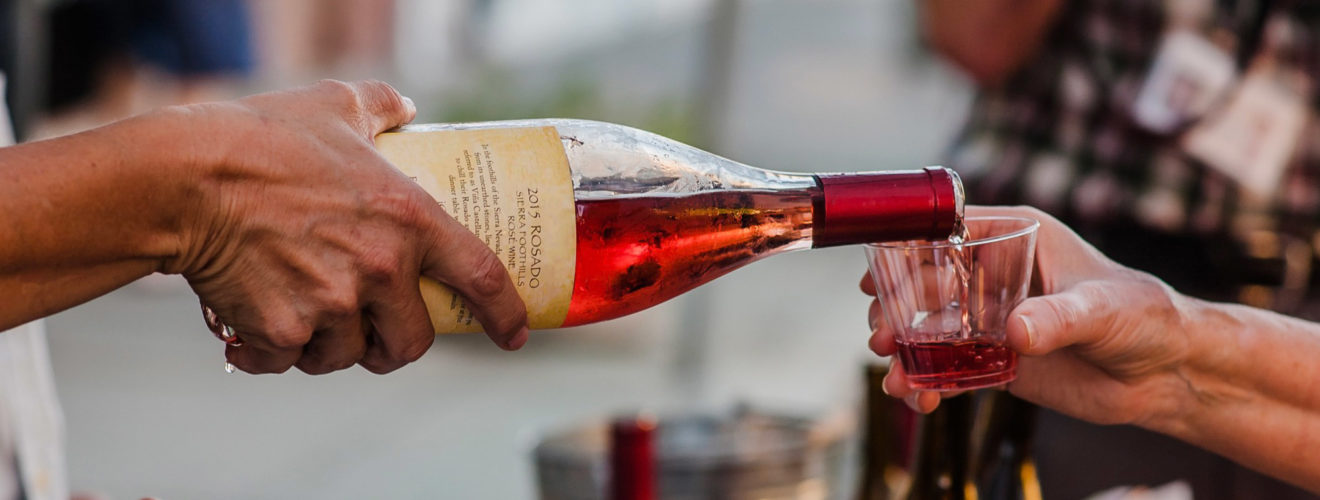- New to Wine Tasting
- How to Fully Taste Wine: Look, Smell, Taste, Repeat (responsibly)
- Winery Etiquette
- Odd Things Wine Drinkers Do
- Common Wine Terms
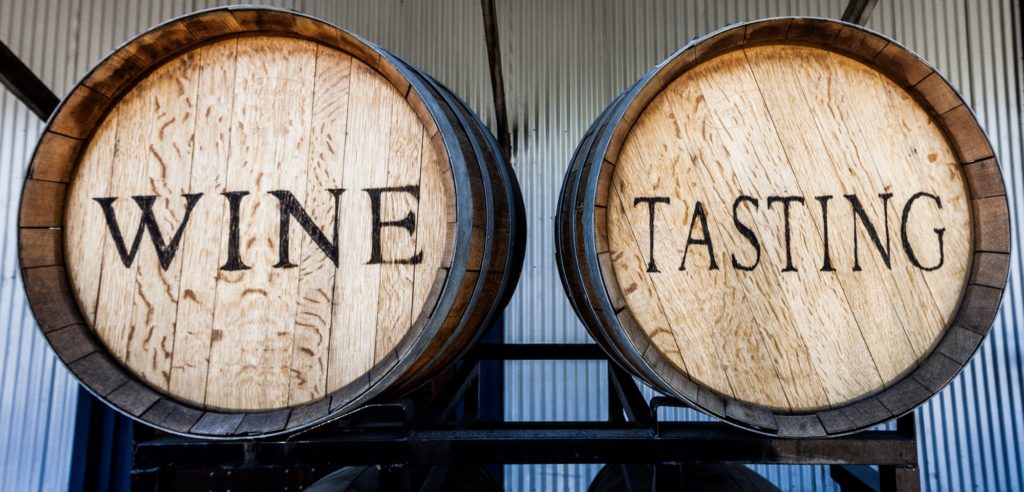
New to Wine Tasting
Rule # 1 – Start somewhere. Wine can be intimidating so be bold, start at a winery, and ask questions. Lots of questions. There is no question that hasn’t been asked before. Every year a new vintage comes out so everyone is tasting these wines for the first time each year. And remember, all you really need to know is whether you like it or not!
How to Fully Taste Wine: Look, Smell, Taste, Repeat (responsibly)
Look
Wine is meant to be viewed in different light, angles, and up close and at a distance. Is the wine light, dark, see through, opaque, does it stick to the sides, does it leave a color on the glass? How deep or light is the color?
Smell
The best way to smell wine is to start at the top of the glass then work your nose all the way in and sniff. You will get different smells at different levels of a wine glass. Take deep breaths, and think about what you are smelling. Is it fruity, earthy, spicy, floral, vegetative, does it even smell good? If you start general, then you can try to pick out more aromas that fall into that category of what you’re smelling. If you thought fruity, is it berry, tropical, dried, citrus, fruit from a tree? When you identify those, try to go even further. Let’s dive into berry and see if you can identify which kind. Is it blackberry, raspberry, strawberry? You may or may not be able to identify all the aromas of your wine, or be able to put it into words. Practice this with other foods, coffees, teas, smoothies, and you will develop a stronger palate over time.
Taste
Sip the wine slowly and let it roll over your tongue. There is no hurry to gulp your wine, or you miss the best part. As you swallow the wine, do you get any different aromas or feelings, such as a warm or hot sensation or a lingering flavor?
Repeat
Use your senses, that is why we have them! Try it again and see if you catch something new, different, or just enjoy the wine. And always drink responsibly.
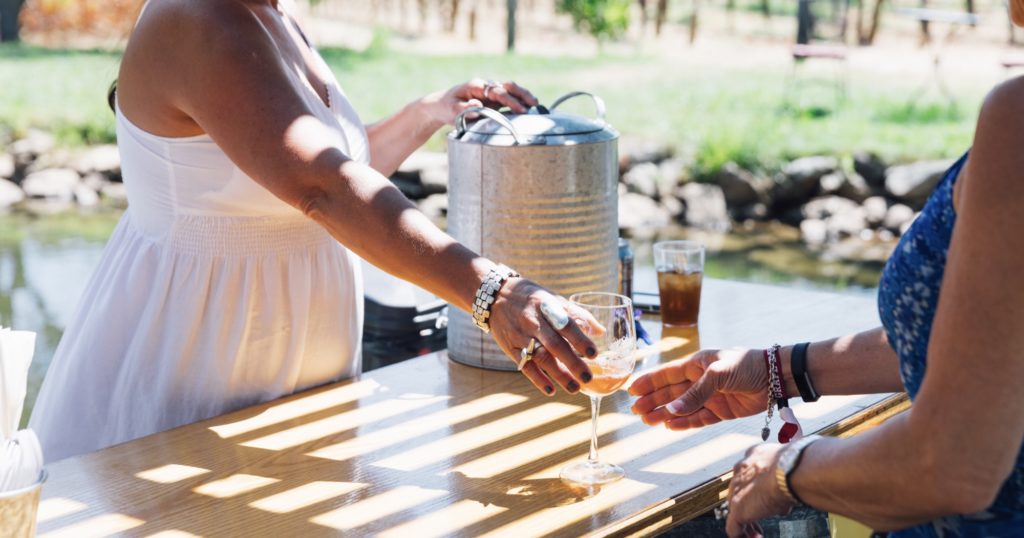
Winery Etiquette
Ask Questions
Ask about the wine, the history of the winery, the person’s background, and about the vineyards. Don’t be shy. But don’t ask with the motivation of proving them wrong or quizzing them about something unrelated. No one likes a know-it-all or being put on the spot.
Groups
If you have a group over 6 people, it is best to call to see if you need reservations. By doing this, the winery can prepare for staffing and give you a better experience.
Limos/Shuttles
Check with the winery first to see if their driveway can accommodate large vehicles. Some don’t make turns or can bottom out with everyone inside. When you have a limo or a shuttle, you typically have a larger group too, so make sure the winery is able to handle the extra guests and knows you are coming.
Hours
Hours change based on seasons, private events, etc. Double check before you go so you aren’t caught off guard. Also, the closing hours are so staff can go home. Don’t walk in 5 minutes before they close and expect a great experience. The same is true when you overstay your welcome afterhours. Get a bottle to go and enjoy it at home.
Outside Food
Most Placer wineries don’t have restaurant facilities so outside food is encouraged. Drinks are welcome too, just not alcohol especially from another winery. Plan ahead and pack a picnic, get some take-out on the way, or check to see if they have a food truck or vendor planned for the day or evening.
Patience
Everyone is there to have a good time. The person pouring is multi-tasking by pouring wine, doing dishes, ringing up sales, answering phones, and remembering to breathe. Give them a little slack and we promise the wine won’t run out.
Perfume/Cologne
While smelling lovely is nice, too much can ruin the tasting for others around you. Some people are allergic to strong perfumes and colognes so just leave it off for the day. We prefer to smell the wine, not the guests.
Pets/Kids
Check ahead to see if the winery is dog and/or kid-friendly. Different internal and external policies and requirements can be a factor in this decision. It is better to call first than have to wait in the car and miss the fun.
Social Media
If you like the wine and the winery experience, share it on social media! Wine, vineyards, grapes, and friends make for great posts. Follow the Placer Wine Trail on Facebook, Twitter, and Instagram and use the hashtag #placerwine.
Tipping
Are you required to tip at a tasting room? The answer is no, especially when there is a tasting fee. However, if the service was exceptional or you received extra tastes, it is always appreciated (but not expected).
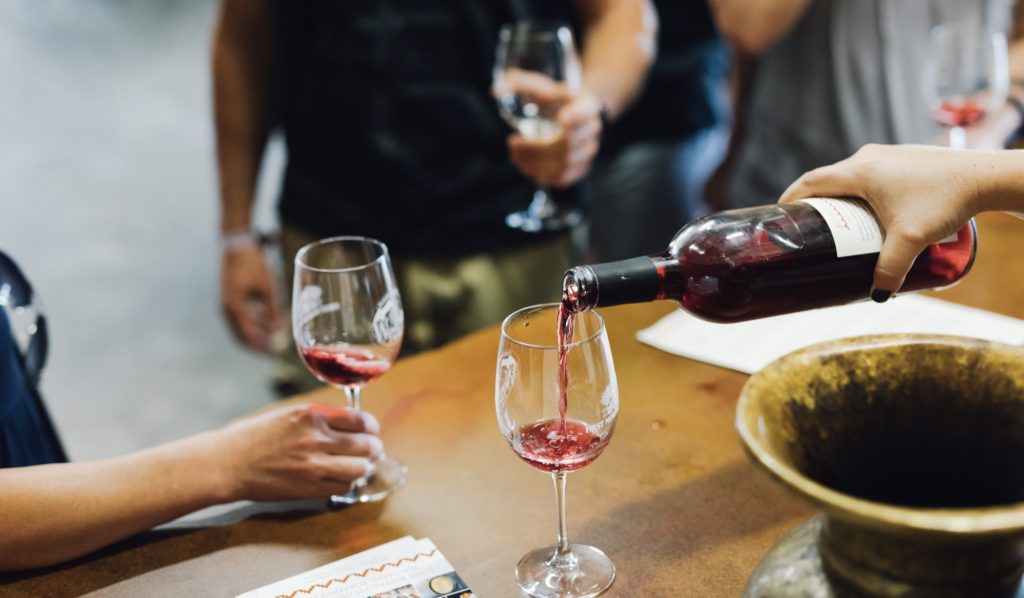
Odd Things Wine Drinkers Do
Spit in a Bucket
While wine is nice to drink, if you are tasting several wines then feel free to spit it out if you are the driver or you have had a few already. Or, if you just don’t like the wine, don’t feel obligated to drink every taste that is given to you. Dump a glass that you like too, that’s ok. Wineries should not be offended by what goes into the dump bucket.
Swirl their Glass
Moving the wine around in a glass helps to get air into the wine to release the aromas of the wine. It gives a chance to notice the color and clarity as well. You can also tell if the wine is higher in alcohol based on the marks (legs) left on the glass. The best way to become good at this is to practice with water at home to start. It is easier to swirl with the glass on a flat surface so you don’t lose control when starting out. And remember, it isn’t about moving your hand around in a circle (let the wine do that), if you move it forward and back, the wine will start to swirl. We assure you it will get better over time with practice.
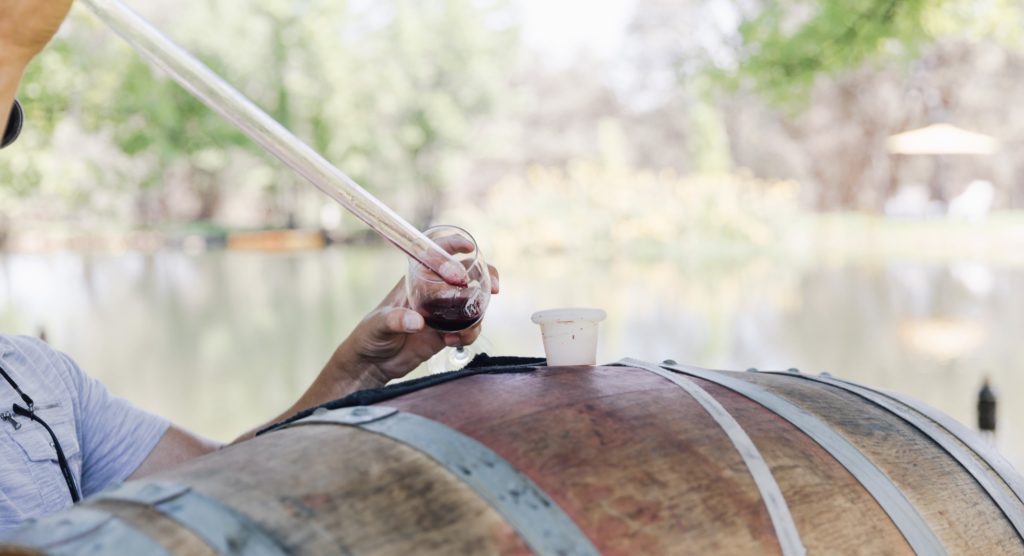
Common Wine Terms
- Acidity: Refers to the crispness or refreshing taste at the end of wine. Acidity is generally more commonly detected in white wines than red wines.
- Aeration: Allowing oxygen to mix with the wine, and you mostly do this with reds. Why do you do this? Doing this will not only allow the wine to warm up to room temp, but it will also allow the aromas to open up and the flavors to soften, simply making it taste better. How do you do this? The best way to do this is to use a decanter, or simply pour it into your wine glass, swirling it or letting it sit amongst oxygen.
- Appellation: A legally defined and protected geographical indication used to identify where the grapes for a wine were grown.
- Aroma: Is just what it sounds like. It refers to the overall smell of the wine. It specifically has to do with the smell of the particular grape varietal. This phrase is used more often in younger wines.
- Balance: Balance is simple. It is simply when a wine is smooth and harmonious, and not one flavor sticks out among the rest. Different flavors should balance each other, for example: acid should balance against sweetness.
- Body: Is referring to the weight of a wine in your mouth, how thin or thick does the wine feel (skim milk, 2% or whole milk kind of feeling)? Things that affect the body of a wine: grape varietals, alcohol content and age of the wine.
- Bright: It may seem as though bright is in reference to sight, but it has to do mainly with how the wine tastes in your mouth. The higher the acidity, or fresh wines, the brighter the wine is. (Keep in mind, that ‘bright’ can sometimes refer to the ‘clarity’ of a wine if you are technically analyzing a wine’s color.)
- Decanting: It is a process that allows a wine to breathe by adding oxygen. Often times we decant higher quality styled red wines with thicker grapes skins (like Cabernet) to soften the tannins in a younger version of the grape. Decanting can also be used for releasing and separating sediment from an older red wine. Most often this process is done by using a decanter.
- Earthy: This is used to describe wines that do not have “fruit-forward” flavors. So flavors such as soil and wet grass… yes we mean DIRT (yum). These flavors are typically found in red wines. Remember, dirt is a good thing!
- Fermentation: It’s the process of converting the sugar from the grape into alcohol and carbon dioxide, essentially turning your wine into an adult beverage. Yeah!
- Finish: This can also be referred to as the aftertaste a wine leaves in your mouth. The better quality wines tend to have a longer finish, that is rich, complex and flavorful.
- Fruit-forward: It’s simple, wines that are leave a more fruit driven taste on your palate and have a fruit forward sense of aroma. Some adjectives to describe fruit either name the actual fruit names or can be described as ‘fresh’ or ‘ripe’.
- Oaky: Has to do with the flavors of a wine that has been passed on by the oak barrels in which wine is stored and aged. This can be both a positive descriptor, as oak can impart gorgeous aromas of nutmeg, cinnamon, all-spice, caramel and toast. Yet it’s important that wine drinkers also understand when a wine has been negatively ‘overtaken’ by too much oak masking the natural fruit flavors of the grapes themselves.
- Nose: The smell of the wine in the glass.
- Palate: It’s simple, it describes the flavors and complexities of a wine on your tongue and within your mouth.
- Structure: The more structure a wine has the more layers of flavor you will taste. It is a way to describe the relationships between the acid, tannins and alcohol in a wine. Better structure and a stronger relationship (equally) between these elements often times mean a wine will age better.
- Tannins: Tannins are a biomolecule found in leaf, bud, seed, root, and stem tissues. These guys add structure to the wine’s taste. They are primarily found in red wine as the juice spends more time in contact with all of these elements during the fermentation process. It is what makes one pucker at the bitterness of a wine, however, some tannins are desirable. Remember, this is one of the major reasons we decant wine. To soft young tannins in wine, making the wine more silky and smooth in texture. An aggressive amount of tannin can be referred to as ‘chewy’.
- Varietal: Refers to the different varieties of grapes such as Pinot Noir, Chardonnay, Cabernet, etc.
- Vintage: The year in which the grapes were harvested, that made the wine.
Source: Amusée Wine “Wine Lingo Cheat Sheet(http://amuseewine.com/blog/wine-lingo-cheat-sheet/)”.
